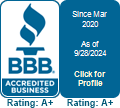
One Simple Budgeting Trick You Should Try
Budgets are no doubt a key factor in money management. A good budget can be a huge help if you are paying down debt, bulking up your savings or just trying to get a better handle on your money. But budgets rarely ever work because they leave little or no margin for error. They are also time-consuming to set-up, tedious to manage and very exhaustive.
But there is one simple budgeting trick you should try. According to the billionaire investor, Warren Buffet “you should not save what is left after you spend, but should spend what is left after you save.” This is called Reverse Budgeting.
What is a “Reverse Budget”?
Most of the traditional budgets begin with income. You start with the money you bring home every month and then determine exactly how much money you will need to pay for essentials and day-to-day expenses, debt repayment, entertainment, and even gifts. Then you look at how you can adjust your expenses to save more. In other words, what you spend takes priority when your budget and whatever remains is your savings. But a reverse budget takes the traditional budget and turns it on its head. Rather than focusing on expenses, it focuses on savings.
This method operates on the principle “out-of-sight, out of mind.” In this method, you simply figure out how much you need to save, make those savings automatic and then spend the rest of the amount.
HOW TO CREATE A REVERSE BUDGET
Here is how to set up your reverse budget in 4 easy ways:
1. Decide on the amount per month that you need to save to reach your financial goals.
To create your reverse first budget, write down your savings goals whether they are short-term, long term or a combination of both. Your priority should be your retirement and your savings fund. But if you have others then pick a few to focus on first or contribute a small amount to each. Then you decide on how much you need to save to reach these goals and also what portion you can afford to put away each month. Writing down your goals with an estimated date and expected cost will dramatically increase the likelihood of success. It will also allow you to understand the things that are most important for you and know where to begin directing your monthly savings. The average amount to save in a reverse budget is around 10% of your monthly take-home pay and half of all your bonuses, raises and tax refunds.
2. Add up your other monthly essential expenses:
The second priority in reverse budgeting is to figure out how much you need to set aside to cover your necessities like housing, insurance, transport, utilities, and food. Prioritize your most necessary expenses and pay them first.
3. Set up a monthly withdrawal from your checking account to one or more separate accounts for your savings:
The way to accomplish this is to open one or more separate savings account, preferably an online savings account that pays a little higher rate of interest than the traditional brick and mortar banks. Besides, online savings accounts will serve as a barrier to impulsive spending as the money will take more time to access.
Next, set up an automatic monthly transfer of the amount you reversed budgeted from your checking account to the online savings account on the day the funds hit your checking account (payday or the next day just in case). In this way, the money is gone before you have a chance to spend it.
4. Blow what is leftover:
After setting aside your goal money and living expenses, you can simply spend the leftover money in your checking account. No categories and no tracking your purchases. Whatever is left is yours to spend. You can spend it buying fancy coffee every day, blow it out on a night spa treatment, Cable T.V, or anything else you see fit-guilt free.
THE UPSIDES OF PAYING YOURSELF FIRST
You have probably heard the phrase “pay yourself first.” And that is what you are doing when you follow a reverse budget. The benefits of a reverse budget are:
- The method is low maintenance compared to other methods. It does not require you to keep a detailed record of your spending or categorize every expense.
- You are putting a priority on your financial goal-whether it is debt repayment or savings – and structure the rest of your finances around that goal.
- With a reverse budget, you know that your financial goals are paid upfront and the rest are just details compared to the traditional budget which focuses on categorizing every household expense.
- This helps you feel you have less money available to spend and so discourages spending all your savings on unplanned purchases. It is still possible to spend more and pay it off with the money you saved, but it has at least introduced another barrier towards doing so.
Some critics say, “what if there is nothing left over to spend?” Well then you are probably a victim of lifestyle creep or you are saving for a life you cannot afford. So you should give it a try before you decide that it would not work for you. You should start small with your savings goal and build them from there because starting small is better than not starting at all.
You can do it! It is so much easier than budgeting! If you have any questions about budgeting and paying down debt contact our helpful team at Royaldebtrelief.com today.


